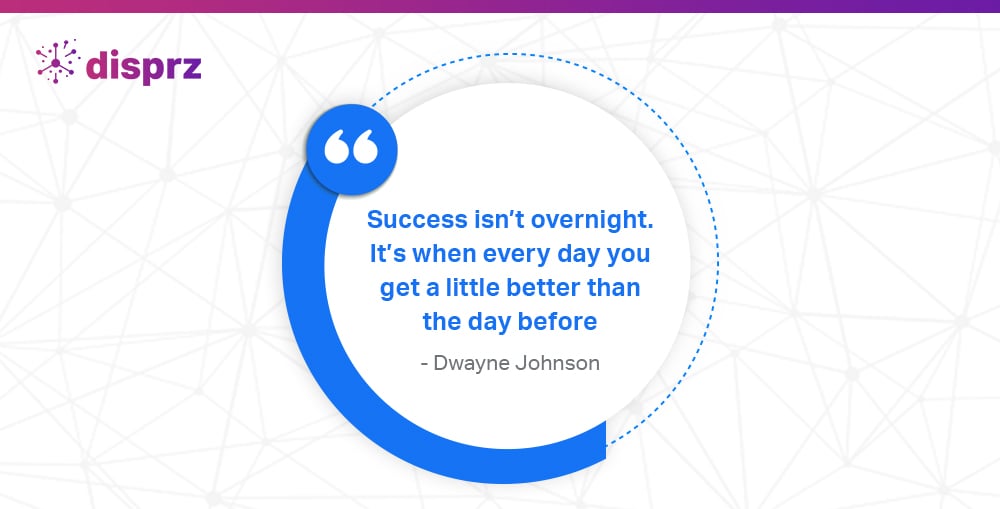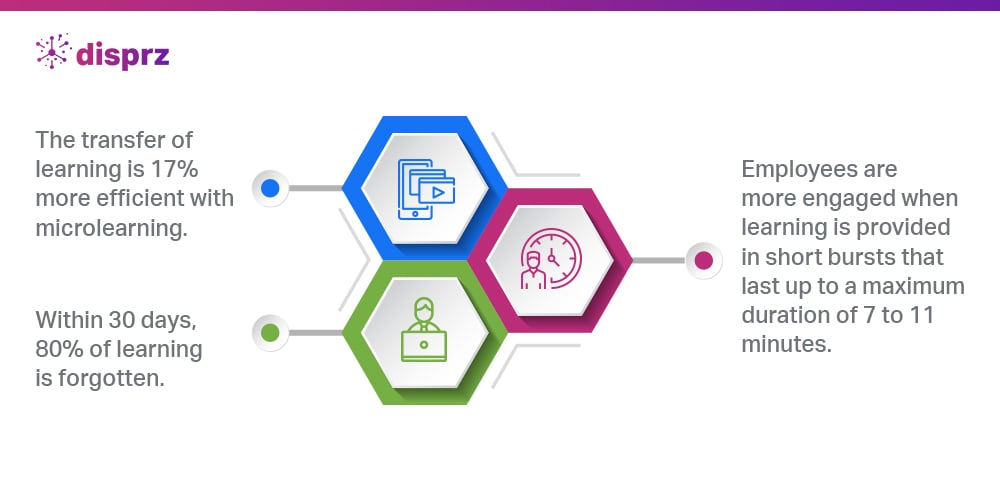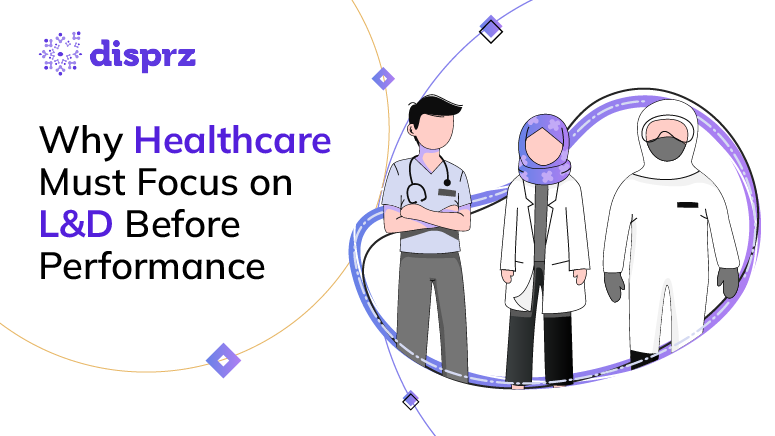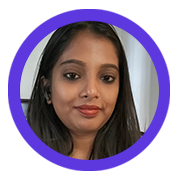Healthcare has always been a challenging industry, but the pressure has dramatically increased post-pandemic. Covid-19 intensified the mental, physical, and emotional strain on healthcare employees who were already reporting burnout pre-pandemic.
Moreover, rapidly changing Government regulations, shifts in patient expectations, and the healthcare industry’s digital disruption have taken a toll on employee performance. Incremental advances across connected drug delivery, changing payment models, rising telehealth, EMR software and new medical technologies require new skills to improve patient engagement and adherence levels.
The changing dynamics in the healthcare industry are affecting employees’ performance. The quality of care offered by hospitals and healthcare organizations is hampered. This can lead to adverse outcomes in terms of patient mortality and complications. Skill gaps in L&D can affect healthcare workers’ performance. This can impact the organization’s reputation and put patients at risk. Hence the L&D professional needs to walk the extra mile to make learning more relevant, engaging, and result-driven for empowering the healthcare professionals.

L&D challenges in healthcare and how to fix it
Robust learning and development can help boost performance and even decrease the attrition rate in the healthcare industry. We cannot deny that skilling a healthcare professional isn’t a walk in the park. It is surely a challenging task but not an impossible one.
Let’s look at some L&D gaps/challenges and ways to fix them.
1) Evolving roles in healthcare and lack of skill development
Roles and responsibilities are evolving at a fast pace in the healthcare industry post-covid. Mere compliance training won’t suffice. Healthcare professionals need continuous upskilling and reskilling opportunities to address current challenges and become future-ready for responding to unexpected medical crises. Moreover, you never know what kind of advanced technology the hospital might have to accommodate. So, l&d healthcare professionals need to be agile enough to manage unforeseen circumstances and adapt to new technology quickly.
-
How to fix it – Commence by finding the skills needed for each role. Modern learning tools like disprz helps in role-based skilling. You can discover and benchmark the trending leadership, functional, digital & meta-skills for each role. Once you know which skills are needed for a specific role, you can delve deep into individual skill gaps and create learning pathways for each employee to upskill them.
2) Time crunch resulting in low adoption
Healthcare is a time-pressed industry. Whether it is a doctor, nurse, respiratory therapist, cardiovascular technologist, or pharmaceutical sales representative, everyone has a lot on their plate, and so they find it challenging to invest time in learning and development. Hence the adoption of the courses is very low in the healthcare industry. Improving skillsets is crucial to offering optimum services in the healthcare industry. Healthcare professionals need to upgrade their knowledge constantly to comply with the changing regulations in the medical field.
-
How to fix it – Microlearning is a smart learning strategy for managing the time crunch issue of health care professionals. The knowledge bytes can fit right into the healthcare employee’s workflow by breaking long content into digestible pieces. Through short videos or short content on the smartphone, the employees can learn at their convenient time. Microlearning helps combat the forgetting curve as healthcare employees quickly reinforce what they’ve learned.

One of India’s leading pharmacy retail chains kept employees up-to-date on – how to stock up on medicine and prescribe the right drug using microlearning. This helped them improve the course completion rate and boost productivity across the stores.
Click here to read the full case study on how the pharmacy retail chain amplified productivity using microlearning.
3) Low engagement and high attrition in healthcare
This industry has sky-high attrition; most hospitals and healthcare organizations are facing a shortage of workforce. The demand for healthcare professionals is increasing rapidly.
Employment in the healthcare field is projected to grow 16% over the next decade. Health care will add about 2.6 million new jobs to the economy.
With the high demand, hiring a healthcare professional is a challenging task. Therefore it is crucial to retain the talents by providing upskilling and reskilling opportunities for career advancement. The organization needs to ensure that the L&D opportunities they provide are effective and impactful; otherwise, employees won’t engage with it, which will result in a waste of time, money, and resources.
-
How to fix it – Through personalization and gamification, you can make the learning sessions engaging and interactive. Using an AI-powered Learning Experience Platform(LXP), you can personalize learning for healthcare professionals. The AI will provide relevant recommendations based on the employees’ job roles and learning behavior. Moreover, you can use gaming elements to make the learning sessions more interesting.
For instance, in the Disprz Gameinar, you can create polls on various medical procedures/policies or quizzes about different medications/ patient safety. Healthcare employees can discuss quality improvements or new technologies and methodologies through breakout rooms. Moreover, through sticky notes, they can provide feedback on the learning session to improve L&D and make it more effective.
4) Changing healthcare policies and no platform to disseminate information
Healthcare policies, safety regulations, and treatment protocols are constantly changing. So the frontline workers in the healthcare industry need to stay abreast of these changes. Therefore a common platform is essential to disseminate critical information in real-time and keep all the employees on the same page.
-
How to fix it – Social learning is a great way to boost collaborative productivity and keep employees up-to-date about changing healthcare protocols, policies, and regulations. On a social platform like Buzz in disprz, the L&D team can instantly post the latest updates and keep everyone updated. Moreover, employees can share helpful information and resources to learn from each other.
5) Compliance Training and Regulatory Requirements
Healthcare professionals must adhere to strict regulatory standards and undergo regular compliance training to maintain their licensure and certification.
-
How to fix it – Implement a healthcare-specific LMS to streamline compliance training. Enhance engagement and retention with interactive modules tailored to the needs of healthcare professionals.
6) Keeping Pace with Technological Advancements
Rapid advancements in medical technology necessitate that healthcare professionals continuously update their skills and adapt to new tools and procedures.
-
How to fix it – Promote digital training in custom software firms through continuous health tech training. Foster collaboration between industry and academia to integrate cutting-edge technology into healthcare curricula.
Why Does Healthcare Need a Specialized LMS?
The healthcare sector needs a specialized Learning Management System (LMS) due to the unique demands of the industry. Healthcare LMS challenges revolve around managing compliance, integrating with existing systems, and ensuring data security.
Here are key reasons why a specialized LMS is necessary
Compliance and Certification
Healthcare professionals must stay updated with regulatory requirements, certifications, and continued education (e.g., HIPAA, and OSHA regulations). A specialized LMS addresses these challenges by automating tracking, reminders, and reporting for licensure renewals and training completion.
Medical Skills and Procedures
Training in healthcare requires hands-on learning for medical skills, from patient care to operating advanced medical equipment. A specialized healthcare LMS can integrate simulations, case studies, and interactive content to support skill-based learning, overcoming one of the common healthcare LMS challenges—effective training delivery.
Customization for Different Roles
Healthcare involves various roles such as doctors, nurses, administrative staff, and technicians. A specialized LMS tailors learning paths for each job role, ensuring that the training is relevant to their expertise and responsibilities.
Data Security and Confidentiality
Handling sensitive patient information is a major concern in healthcare. A specialized LMS provides advanced security measures and adheres to strict privacy regulations, ensuring the safe storage and access of training data.
Scalability and Integration
Another healthcare LMS challenge is integrating with hospital systems (such as EHRs) and scaling according to an institution's size. A specialized healthcare LMS can meet these requirements, making it versatile for different healthcare environments.
Continuous Updates in Healthcare Knowledge
Medical and healthcare knowledge evolves rapidly. A healthcare LMS provides a centralized platform for real-time updates on healthcare advancements, treatments, and research, ensuring that healthcare professionals are always up-to-date with the latest information.
Conclusion
The shortage of skilled professionals is fueling the complications and mortality rate in the healthcare industry. The L&D team needs to rethink its learning and upskilling strategies to improve employee performance and productivity. Explore new strategies and technologies to take your learning and development to the next level. A complete skilling suite like disprz can be your helping hand in strengthening your employee learning and upskilling.
Blending technology with cognitive science principles, disprz creates an impactful and engaging learning platform for employees at all levels. It helps identify the right skills needed for different healthcare job roles and assesses the current levels, drives hyper-personalized learning, and makes available insightful analytics that link back skilling to the organization’s performance. See a Preview to experience disprz in action.




.png?width=300&height=340&name=Buyer%E2%80%99s%20Guide%20for%20Learning%20Management%20Systems%20(LMS).png)





